Tapissary
Tapissary is the creation of Steven Travis, who has been working on it for
many years. It is a hieroglyphic language originally inspired by American Sign
Language of the Deaf. He was an interpreter, but in his free time began stylizing
its graceful movements into script. He added pictographs and reworked characters
from Chinese, Ancient Egyptian and Mayan to fit his stylistic parameters. There
are over 7,000 celloglyphs in Tapissary, and an accompanying syllabary of hundreds
more letters. Because the language originally took shape under the influence of Sign
Language, it is based on the visual and has no pronunciation.
Notable features
- Direction of writing: boustrophedon
- Consists of over 7,000 cellographs (essential vocabulary words) and hundreds of syllabic glyphs.
The story of the Tapissary script
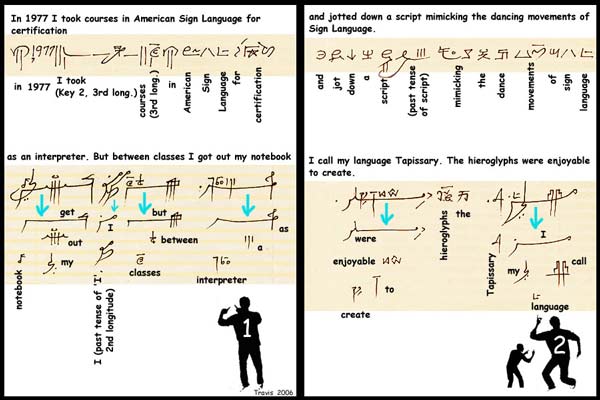
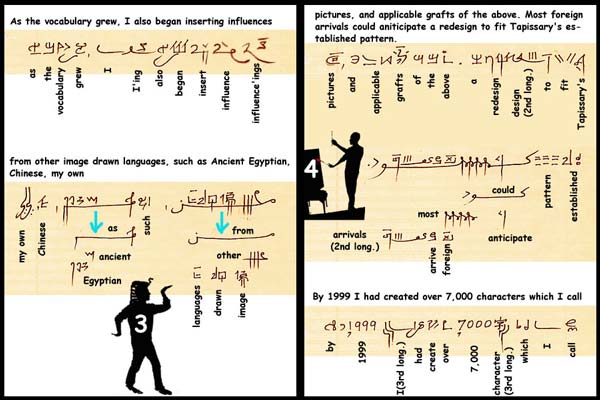
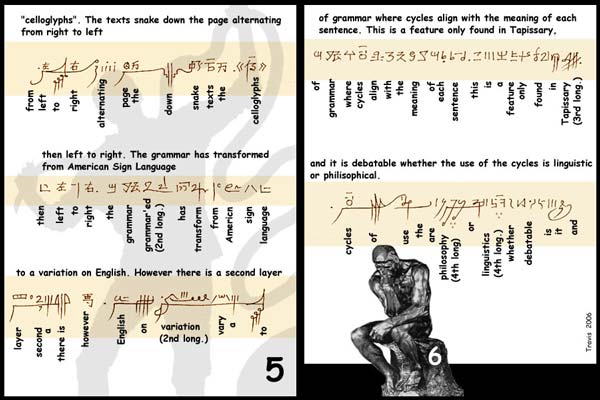
Sample texts in Tapissary
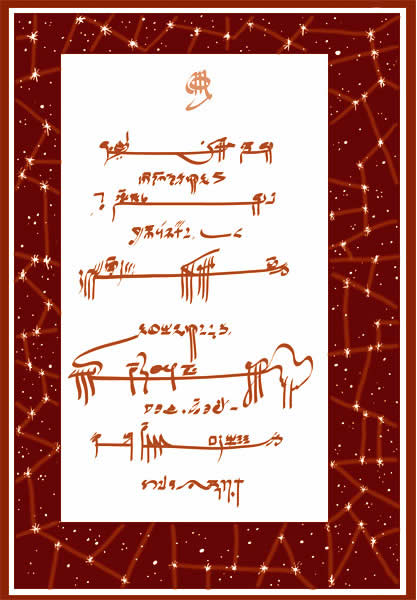
Translation
The station where I buy my gas
Has pigeons roosting in the beams
Above the self-serve pumps. Below
Fluorescent lights that glow all night, I see
The parents dozing near their quaking nests.
The moon, a dime in nighttime’s shoe,
Shines down on wires connecting us-
Metal and gas, feathers and blood-
The heavy, shuddering lot of us, like some
Forgotten egg, beneath Orion’s sword.
“Shell”, a poem by Leslie Monsour
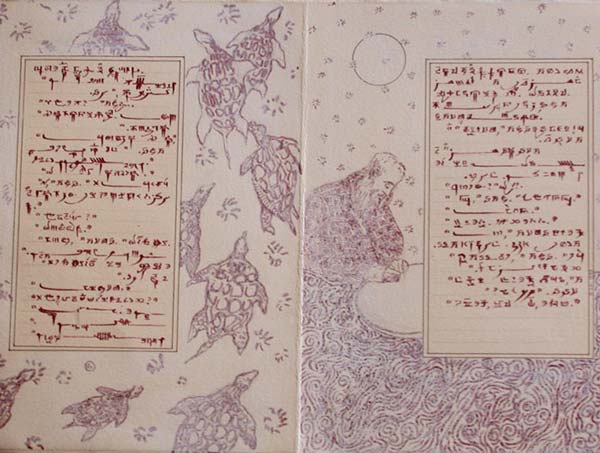
Two pages from a translation Steven began around 2000 or 2001 of Hemingway’s “The Old Man
and the Sea” are reproduced here.
